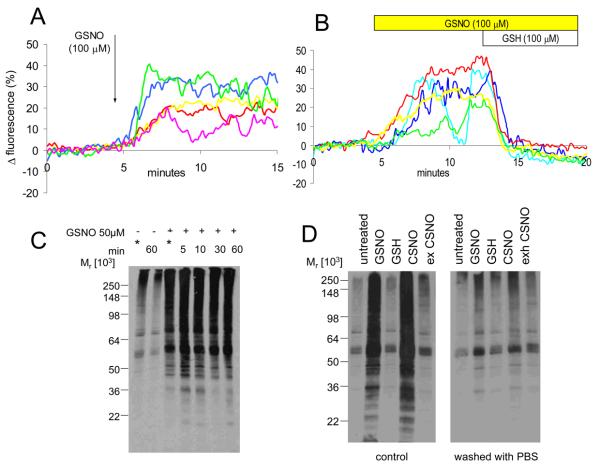Fig. 4.
NO and protein S-nitrosylation in sperm. (A) 100 μM GSNO, a nitrosylating agent, causes a rise in [Ca2+]i similar to that seen with NONOate but onset of the effect is more rapid. Responses of 6 cells shown. (B) 100 μM GSH rapidly reverses the action of 100 μM GSNO on sperm [Ca2+]i. Responses of 5 cells shown. (C) GSNO causes rapid S-nitrosylation of sperm proteins: Lane 1 shows background levels in cells processed immediately for assay (indicated by *). Lane 2 shows that, after 60 minutes of incubation of the cells in sEBSS, this level does not change. Lanes 3, 4, 5, 6 and 7 show increased S-nitrosylation in cells processed for assay immediately upon exposure to 50 μM GSNO (*) and those incubated with GSNO for 5, 10, 30 and 60 minutes respectively. S-nitrosylation reaches near steady-state levels in the sample processed immediately (approximately 5 minutes for preliminary centrifugation; see methods). (D) S-nitrosylation of sperm proteins is rapidly reversible. Left panel shows S-nitrosylated proteins in untreated cells incubated for 10 minutes (lane 1), cells exposed to GSNO and cys-SNO (lanes 2 and 4) and cells exposed to GSH and exhausted cys-NO (lanes 3 and 5; controls). Right panel shows same treatments but cells were washed in PBS immediately before processing for the assay. S-nitrosylation caused by GSNO and CSNO is rapidly reversed upon removal of the agent.

